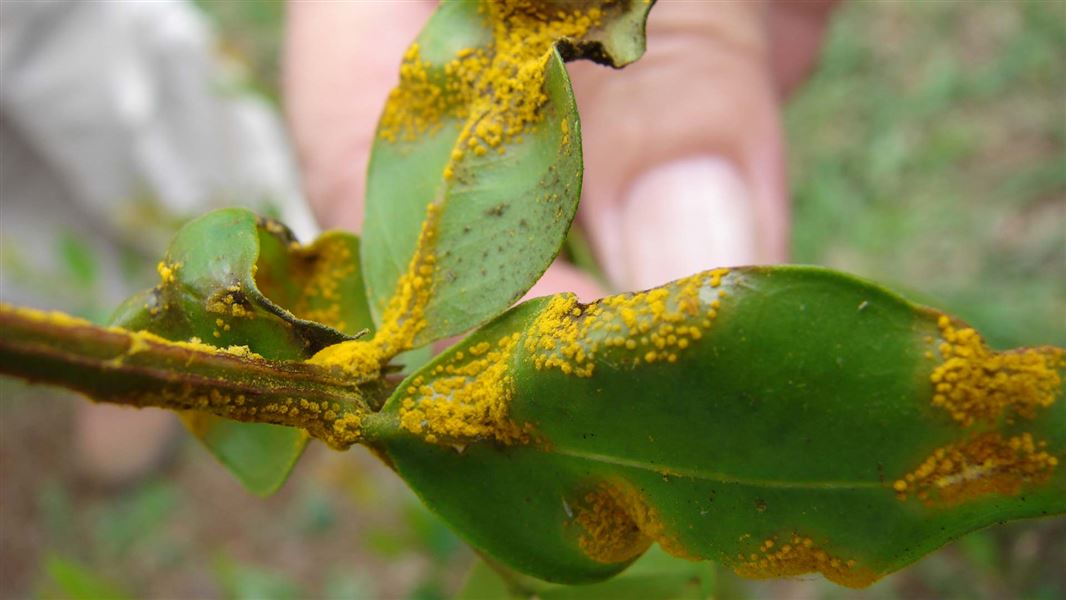
Introduction
The fungal disease myrtle rust has been found on mainland New Zealand and a response is underway.Date: 04 May 2017Source: Offices of the Minister of Conservation and the Minister for Primary Industries
A biosecurity response is underway after the detection of myrtle rust on mainland New Zealand for the first time, Primary Industries Minister Nathan Guy and Conservation Minister Maggie Barry have announced today.
Myrtle rust is a fungal disease which can seriously damage various species of native and introduced plants in the myrtle family, including pohutukawa, rata, manuka, gum, bottlebrush and feijoa.
“The Ministry for Primary Industries (MPI) was notified on Tuesday evening by a nursery in Kerikeri that five pohutukawa seedlings had suspected myrtle rust, and laboratory testing has now confirmed this,” says Mr Guy.
“MPI has moved quickly and initiated a Restricted Place notice to restrict the movement of any plants and people at the site, and is treating nursery stock with fungicide spray as a precaution. Work is also underway to trace any stock that has left the nursery and all other nurseries in Kerikeri are being inspected today.
“The disease is prevalent in eastern Australia and Tasmania, and was discovered on Raoul Island in late March this year.
“Myrtle rust spores are microscopic and can easily spread across large distances by wind. Officials believe that wind was the likely pathway of incursion into Raoul Island, and it’s likely that wind has carried spores to mainland New Zealand from Australia.”
Conservation Minister Maggie Barry says the incursion could have serious consequences for some native species.
“Myrtle rust generally attacks soft new leaf growth, and severe infestations can kill affected plants. This could include native species like the pohutukawa and the rata,” says Ms Barry.
In Australia, the fungus has had different levels of impact on myrtle species, with some more seriously affected than others.
“Myrtle rust has long been expected to arrive in New Zealand, and since the Australian outbreak began in 2010, the Government has worked on a range of measures to help manage and adapt to the fungus in the long term if necessary,” says Ms Barry.
“This includes accelerating work already underway to collect and store germplasm from affected species, searching for signs of resistant myrtle strains which could be incorporated into a breeding programme and monitoring at 800 locations across the country.”
“DOC will also be conducting inspections of our myrtle species on public conservation land in Northland for any early signs of the fungus.”
There is no known method of controlling the disease in the wild, apart from application of fungicide in very small areas as a last resort. Even if eradication is achieved, there is an ongoing risk of reinfection from Australia.
“It’s very disappointing that this fungal disease has appeared in New Zealand. However, I want to thank the staff and owner of Kerikeri Plant Production nursery for making such a prompt notification to MPI,” says Mr Guy.
Anyone believing they have seen myrtle rust on plants in New Zealand should call MPI on 0800 80 99 66. It is very important not to touch the plants or attempt to collect samples as this will spread the disease.
In particular, anyone who has purchased any plants from the myrtle family in the last month should check for physical signs and contact MPI if any are seen.
More information on MPI website
Contact
For media enquiries contact:
Email: media@doc.govt.nz